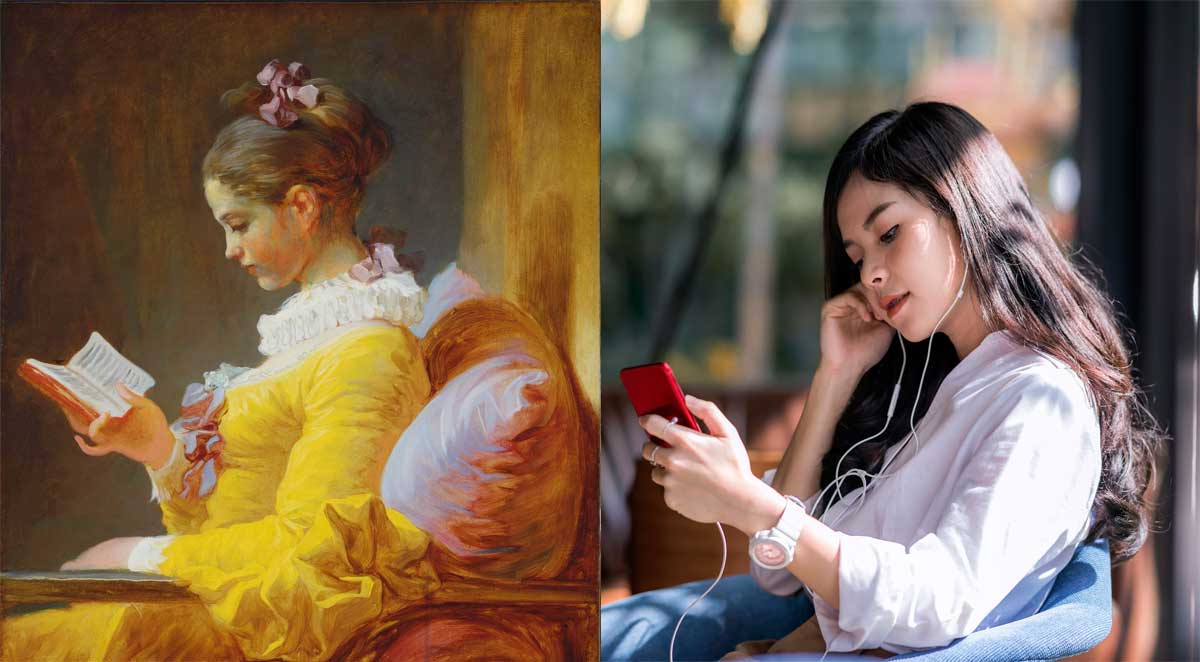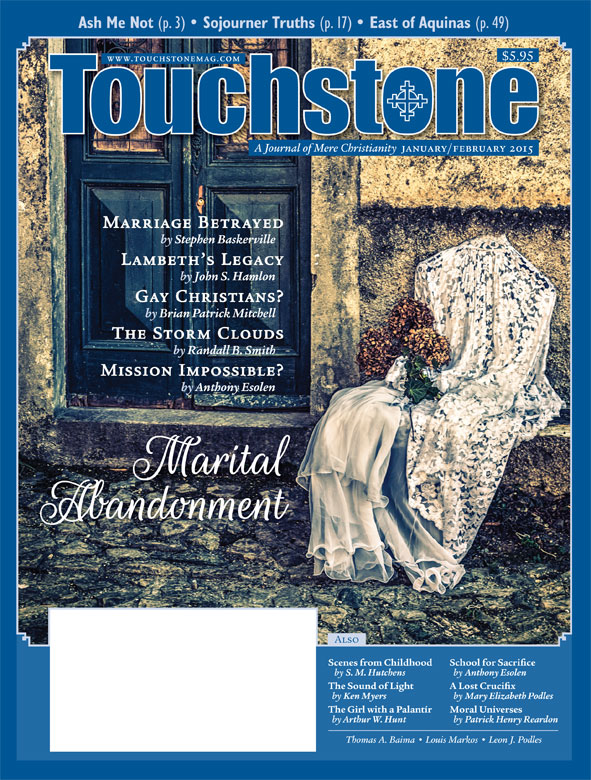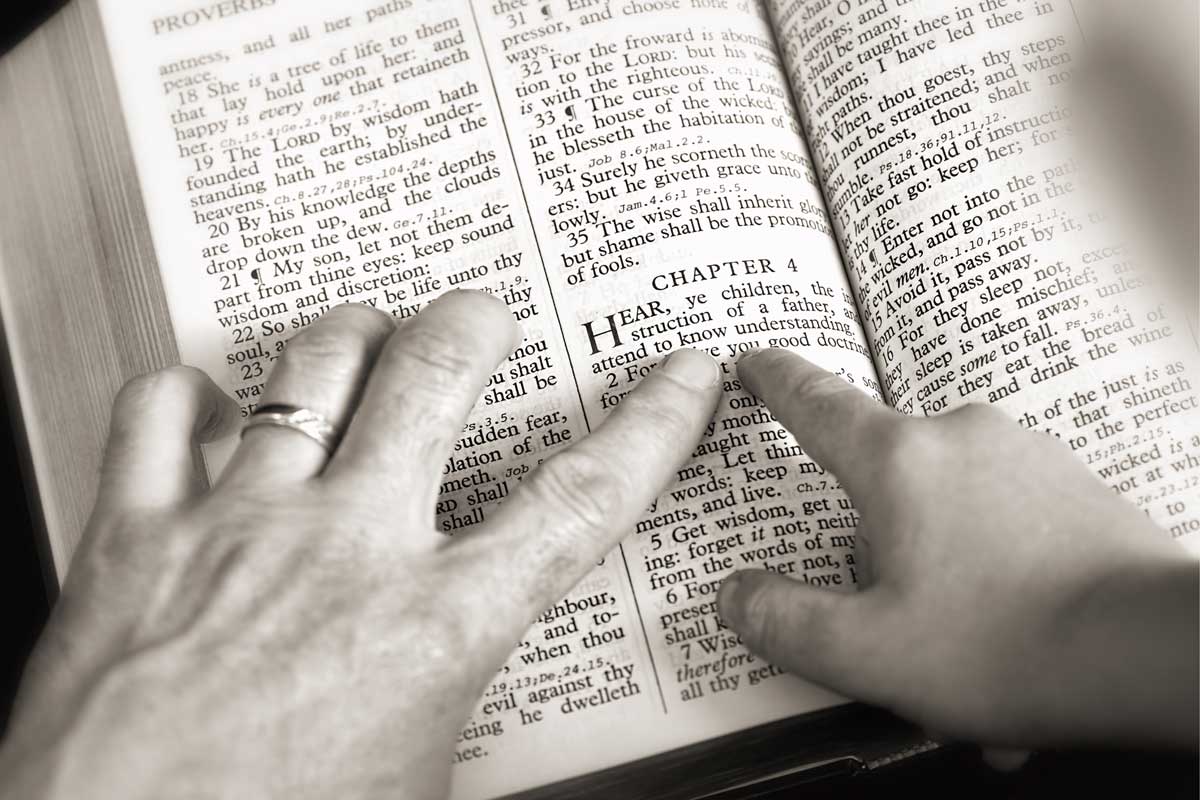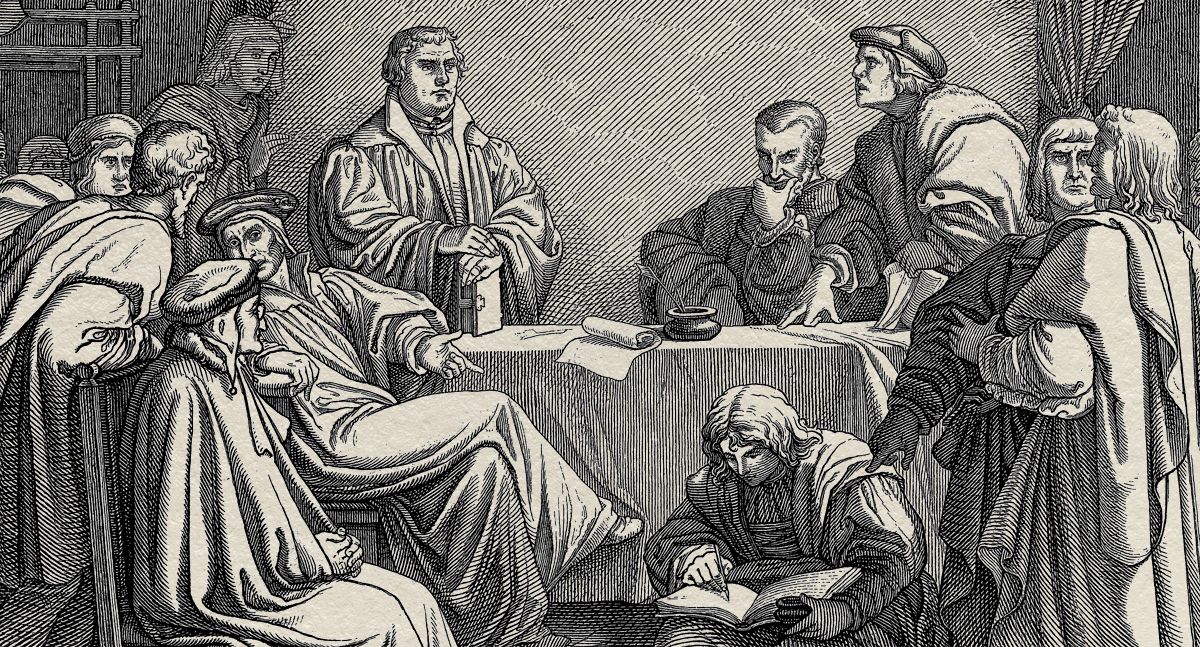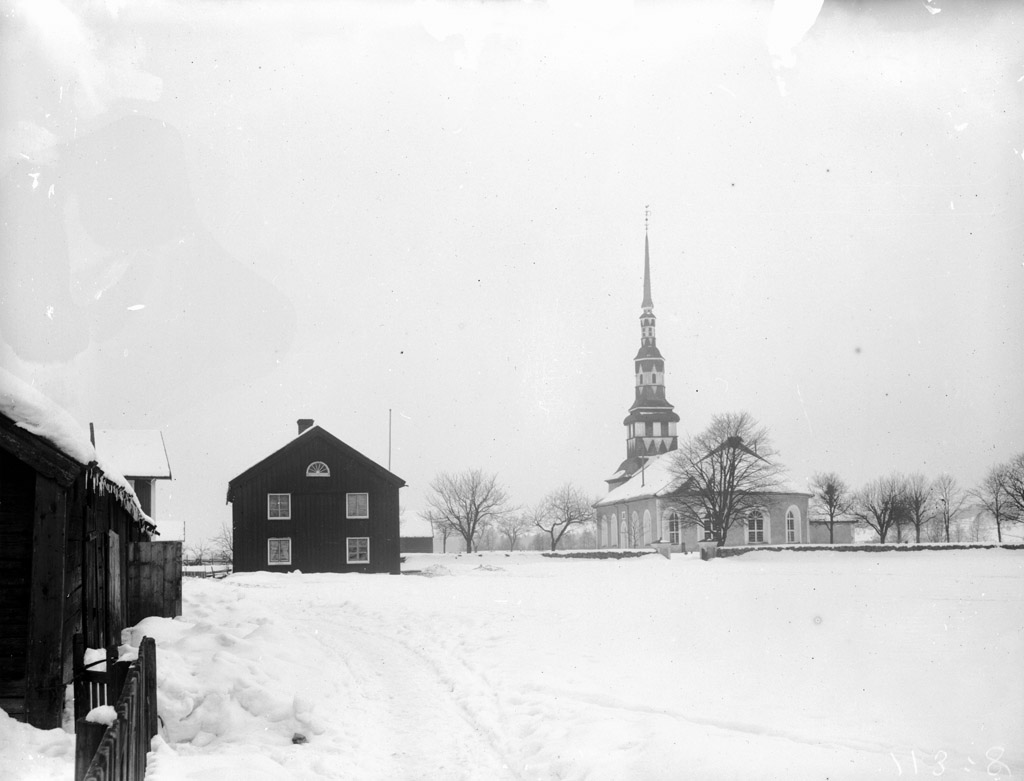View
A Girl with a Palantír
Arthur W. Hunt on Education, Handheld Devices & A Young Girl Reading
Jean-Honoré Fragonard's A Young Girl Reading (1776) resides in the National Gallery of Art in Washington, D.C., and is perhaps one of the most familiar paintings of a girl reading coming to us from the eighteenth century. When it was painted, America was in revolt and France was on the verge of doing so. Despite the turmoil of her times, here she sits, held captive by a book, reading in silence.
One is drawn to the painting by its use of light. The subject wears a saffron dress and is illuminated by the light from an unseen window. A marshmallow pillow supports her back, and her bourgeois bearing is furthered evidenced by a free pinkie finger. Not entirely typical of the playful Rococo style, this is a more reserved Fragonard, who is now taken up with family life. The subject could be any housemaster's daughter. What she is reading we do not know—a playbook, Voltaire, Rousseau? Nevertheless, the fact that she is reading is significant. Her medieval counterpart could not read, for her sort—schooled, trained in arts and manners, literate—did not exist in Europe until the sixteenth century.

Typographical Minds
The information environment existing in 1776 gave us people with "typographical minds." Neil Postman contends in Amusing Ourselves to Death that the early American mind was shaped by the habit of reading. Having sprung from the sovereignty of the printing press, the typographical mind possessed "a sophisticated ability to think conceptually, deductively and sequentially; a high valuation of reason and order; an abhorrence of contradiction; a large capacity for detachment and objectivity; and a tolerance for delayed response." Newspapers, pamphlets, sermons, and books constituted the reading material for Americans. The founders were aware that a literate, informed, and engaged public would safeguard the country against tyranny. "I should mean that every man should receive those papers," wrote Thomas Jefferson in 1787, referring to newspapers free from government control, adding, "and be capable of reading them."
There is a wonderful painting depicting Benjamin Franklin's print shop just prior to the War of Independence. A middle-aged Franklin stands on the steps of his Philadelphia shop in conversation with a patron. A female figure, apparently the patron's wife, is bent over, reading the contents of an open book. The illustrator has captured a remarkable truth about the times: women of the mid-eighteenth century were bookworms as much as their male counterparts. Higher education may not have been an option for them, but many received what Jefferson insisted upon, a rudimentary education for proper citizenship.
To think that John Quincy Adams received a U.S. Congressional diplomatic appointment to the court of Catherine the Great at the ripe old age of fourteen makes one wonder what sort of education children in 1776 were receiving. Certainly Adams's education was elitist in the truest sense of the word, but George Washington obtained his education in a little schoolhouse in the middle of a tobacco field. Abraham Lincoln obtained his education essentially the same way, with borrowed teachers and borrowed books. Like so many frontier youth, Lincoln read and reread the limited number of books he could get his hands on: Aesop, the Bible, Bunyan, Defoe, Franklin, and Shakespeare. This seemed sufficient to him for a career in law, and one has to assume that it was, and not only for the bench, but for the White House as well, and for those crowds assembled at the fields of Gettysburg.
Young Girl Reading
Fragonard's girl with book in hand might have received a formal education at school, but more likely she was tutored at home. When Jefferson arrived in Paris in 1784, he put both his daughters in a convent school. He had heard about the cavaliering women of the Salon, no doubt from John Adams, among others. The bellicose Adams would later confess to Jefferson, "I have such a consciousness of Inferiority to them that I can scarcely speak in their presence. . . . Very few of these Ladies have ever had the condescention to allow me to talk." The first time, apparently, Adams was speechless, it was in front of this educated company of women.
If Fragonard's painting apprehends the ideal as imagined by French-speaking families, then one must ask, Who is this girl? I would suggest that she is a portrait of civility, intelligence, and virtue. In her, a suitor would find refinement and the embodiment of what was best about French culture, such as it was prior to the American Revolution. Her depiction is not, however, isolated to the tastes of Paris. She would be the ideal in Philadelphia as well. No doubt there existed a hundred like her within a mile of Franklin's print shop.
There she sits, absorbed in a philosophical treatise, or perhaps identifying with a heroine in some kind of trouble. As the day spent reading passes, she comes to learn something new about herself and her surroundings. The deep mediation of words on the page allows her to compare herself with others, to regret past actions, and to resolve for better ones. She is an improved person when she gets up from her seat. She says nothing as she climbs the stairs, but she rolls over in her mind all that she has read. Later, at the dinner table, the conversation turns to politics, and she now speaks her mind. Her father smiles at her astuteness. Her suitor's speculation is confirmed; she would be a clever and cultured companion.
Girl with a Gadget
Contrast the image of A Young Girl Reading with the images of women in iPod's advertising crusade. The iPod girls groove to music, for which the device was originally designed. They crank their arms and shake their booties. Today these devices serve multiple purposes—taking pictures, watching movies, checking email, and playing video games. The iPhone and iPad also serve many of these same functions. You can even use them to read books. But whether girls actually use these gadgets to read books is another question.
The girl with a gadget is a common sight on the university campus where I teach. There seem to be more girls with gadgets than girls with books. For years I began my courses with the typical icebreaker questions: What is your major? Where is your hometown? What book did you read for fun this summer? But I stopped asking the last question because the answers I received were too embarrassing and depressing (for me, not them). The response was usually, "I don't read books for fun," and was delivered with no sense of shame. To the contrary, it was given as a badge of honor. The students might as well have said, "Our generation doesn't read books, or don't you know this, silly man?"
In her 2013 study, "Reading Habits of College Students in the United States," SuHua Huang and her colleagues reported that students found textbook reading "tedious" and only did it if they thought they would be tested on the material. The study found that college students were still reading, but most of their daily reading came from the internet (1.3 hours), followed by academic-related reading (1.1 hours) and extracurricular reading of news, graphic novels, and nonacademic books (0.6 hours). Huang also reported that students had difficulty putting away their internet-capable cell phones during class and often kept them on their laps or in their hands. Their gadgets were such an "obsession" that few students actually took notes, followed the teacher's instructions, or brought their textbooks to class.
Two categories of teachers emerge from this environment: those who allow electronic devices in the classroom and those who don't. I am in the second category and can't imagine what goes on in classrooms with first-category teachers. My syllabus warns the student in bold letters:
Cell phones and other electronic devices must be turned off before class begins. No personal computers may be used in class unless the instructor gives permission. Students who violate the no electronic device policy will be marked absent for that day. Failure to heed these guidelines of participation and courtesy will affect your final grade, which is up to the discretion of the professor.
If I were a student, this warning would scare me into compliance. But despite its thunder-from-the-mountain tone, students still disregard it. Without question, young women are more tenacious in breaking the policy than men. If the policy said, "Failure to heed these guidelines will result in immediate death," I don't think it would make any difference. When confronted after class, students are usually very courteous: "Oh, I am so sorry. I promise I will keep it off," and so on. I am glad for this response, but the boldness with which they break the policy tells me something about the kind of obsession I am up against.
The Temptation of the Palantír
The temptation to break my policy must be of the same sort as the temptation Pippin the hobbit faced as he stood before the Palantír of Orthanc. A rare artifact in Tolkien's world, the Seeing Stone allowed its users to cast their eyes afar, to make contact with other gazers. Saruman was corrupted by it because Sauron seduced him on the other end. Pippin couldn't keep his hands off the thing. The devil may not be waiting for my students on the other side of their devices, but boyfriends and girlfriends, mothers and fathers, celebrities and corporations are waiting for them, 24/7. My policy only amounts to Gandalf throwing his cloak over the stone. But it is necessary if I want to create an environment for learning.
About once every blue moon I catch a student reading a book in class. There is no better way to get on my good side, although I still don't allow it. Yet never have I felt compelled to include a no-open-book statement in my policy. And never have I caught a student reading a book on an electronic device in class.
A campus minister once told me that he was buying my book at that very moment so he could read it on his electronic device. He was proud of his gadget and, as we spoke, reveled in the thought of reading my book on it. Six months later, when I asked him how he liked it, he said he had not read it. What a waste of money.
Nicholas Carr's book The Shallows has demonstrated to my satisfaction that the internet is frying our brains. The rise of the internet has not made us better readers; it has made us shallow readers. Carr compares deep reading to scuba diving and internet surfing to jet skiing. After twenty years of teaching at the college level, I have a strong suspicion that students no longer read deeply and have little desire to do so. If this is true, we could be seeing the end of education as we used to know it. And if you read Postman carefully, you know that the end of a literate-based education also spells the end of civility. Indeed, it spells the end of a young girl reading and all that she signifies—sophistication, depth, urbanity, intelligence, refinement.
I heard a pretty young girl belch out loud the other day on the campus quad. Her friends laughed, and I turned my head, and walked on. She might be in my class next semester with her gadget, and I will politely ask her to put it away. This she will do, and when class is over, she will walk out the door and pass into the ether-world of tweets and beeps. A boy around the corner will see her and wonder what kind of girl she is—that girl with a gadget. Whoever she is, she is not a young girl reading. •
Arthur W. Hunt III is a former professor of public speaking at the University of Tennesse at Martin. He is now preparing to transition to ministry-related service and lives in the greater Memphis area.
bulk subscriptions
Order Touchstone subscriptions in bulk and save $10 per sub! Each subscription includes 6 issues of Touchstone plus full online access to touchstonemag.com—including archives, videos, and pdf downloads of recent issues for only $29.95 each! Great for churches or study groups.
Transactions will be processed on a secure server.
more on education from the online archives
more from the online archives
calling all readers
Please Donate
"There are magazines worth reading but few worth saving . . . Touchstone is just such a magazine."
—Alice von Hildebrand
"Here we do not concede one square millimeter of territory to falsehood, folly, contemporary sentimentality, or fashion. We speak the truth, and let God be our judge. . . . Touchstone is the one committedly Christian conservative journal."
—Anthony Esolen, Touchstone senior editor




